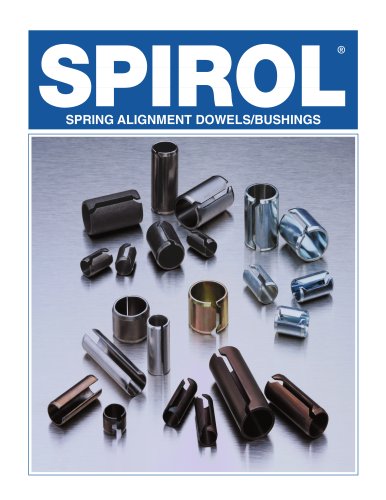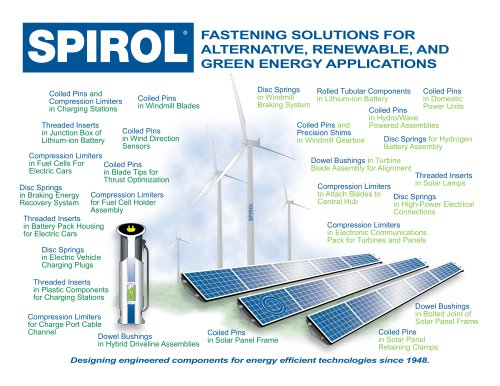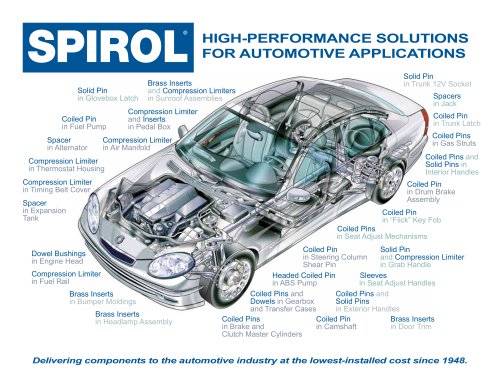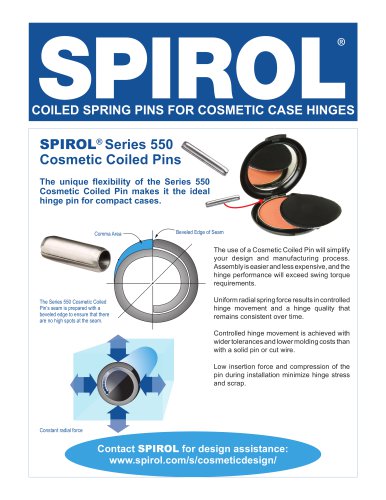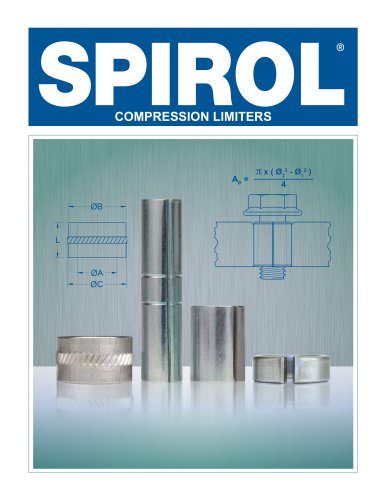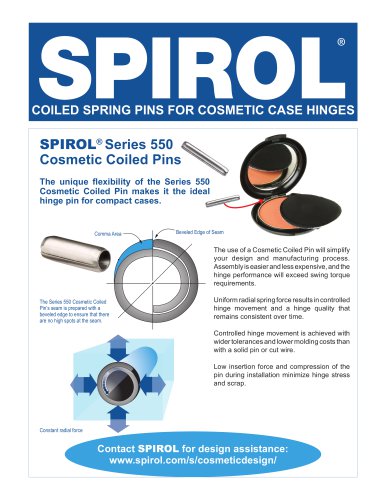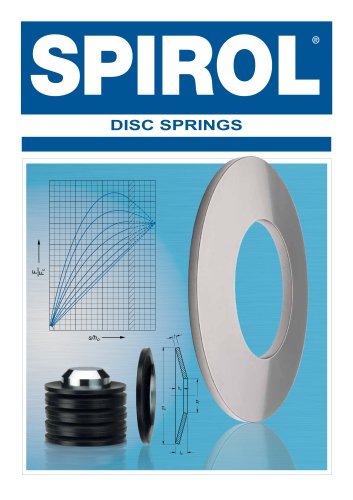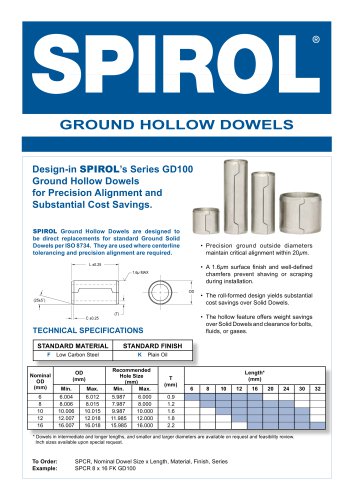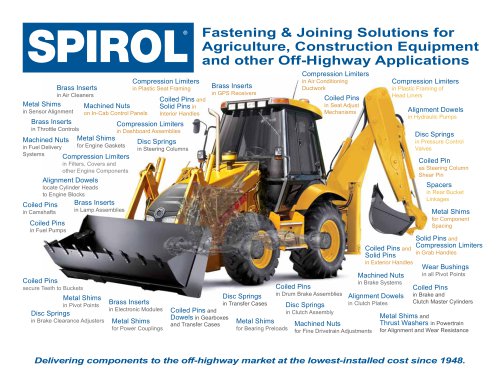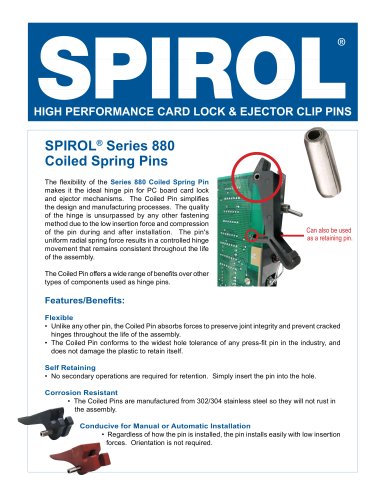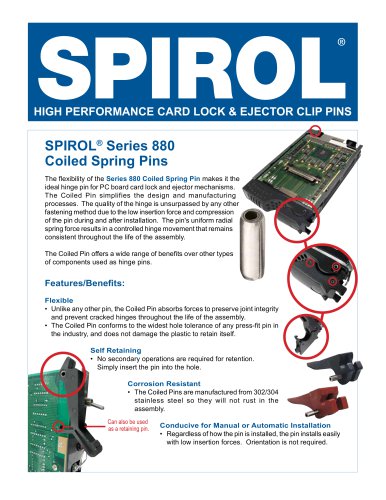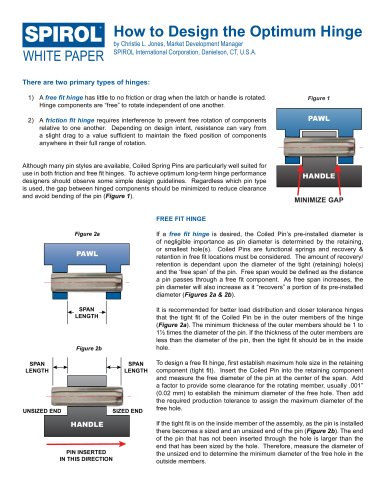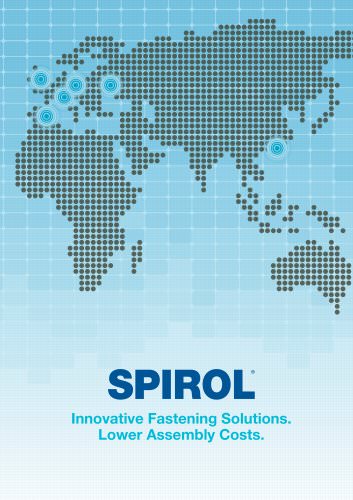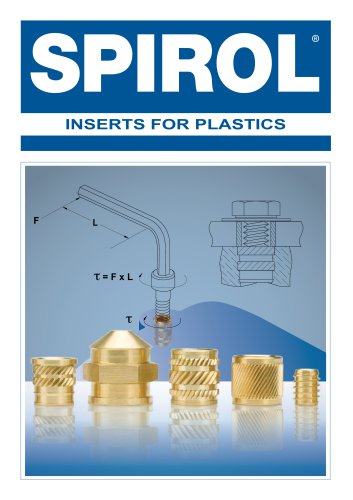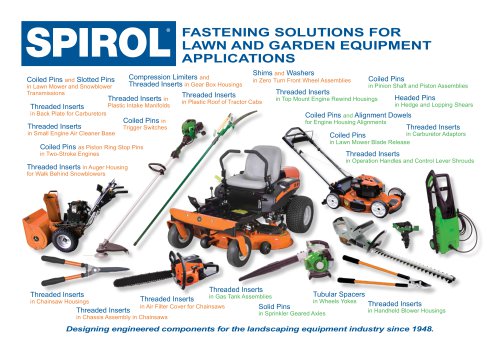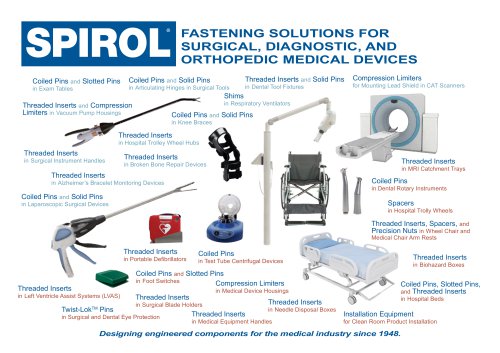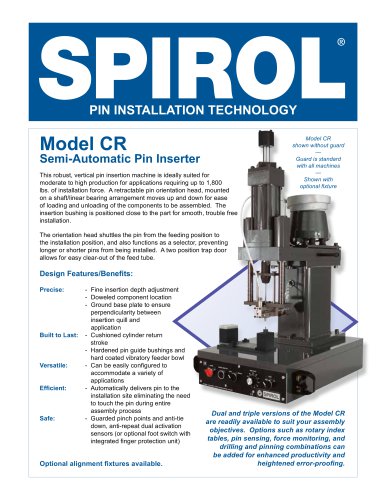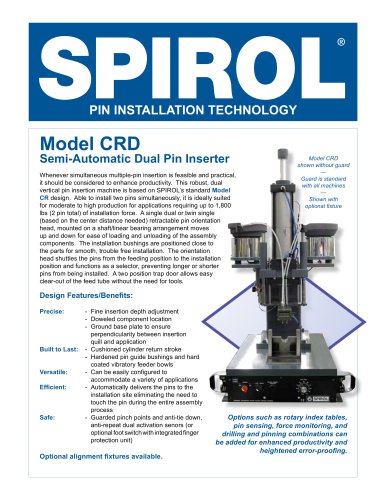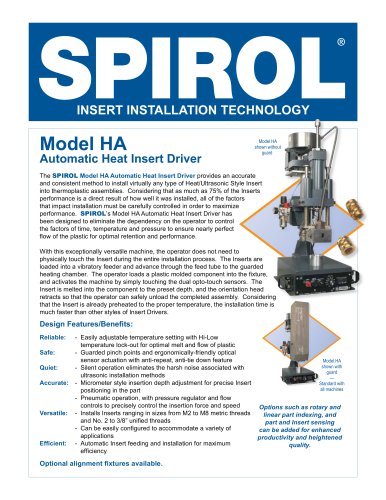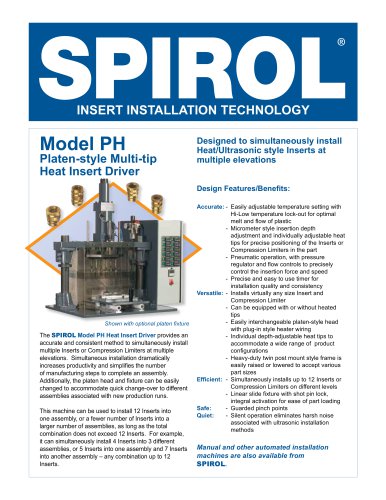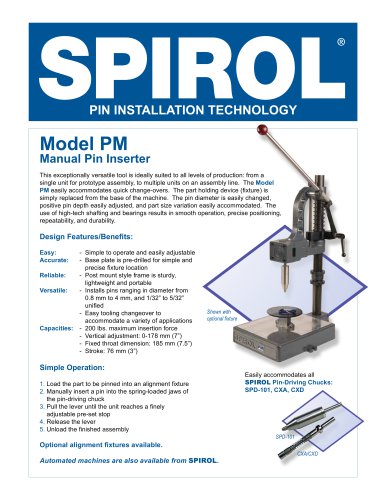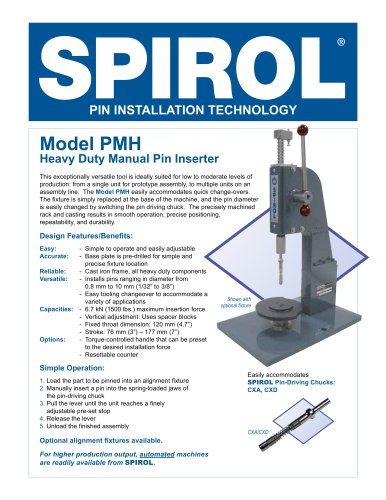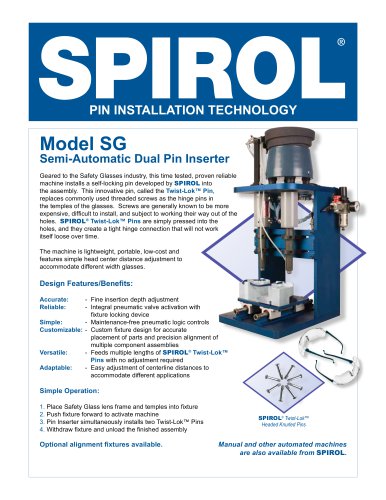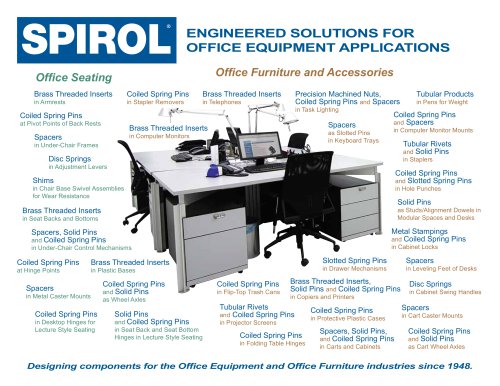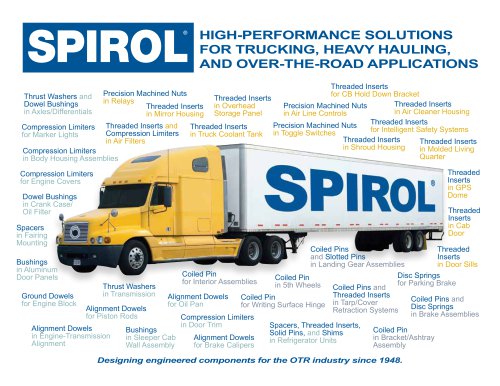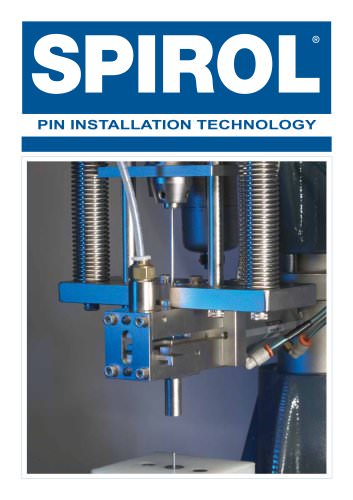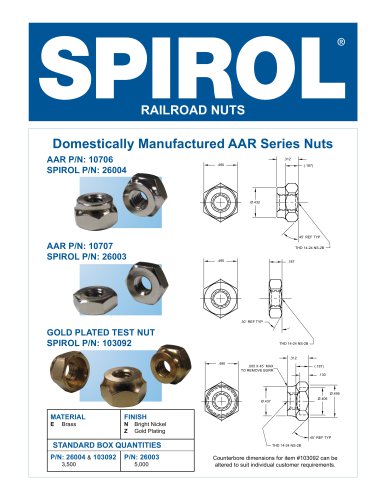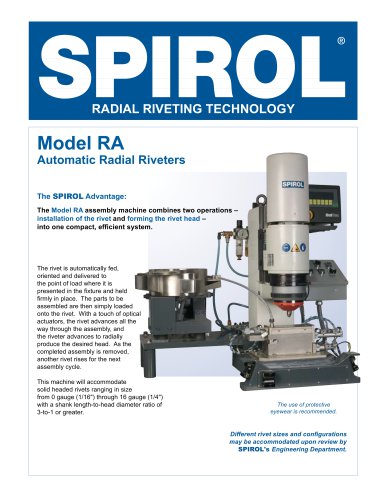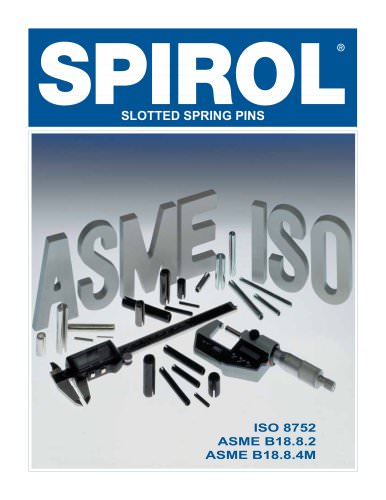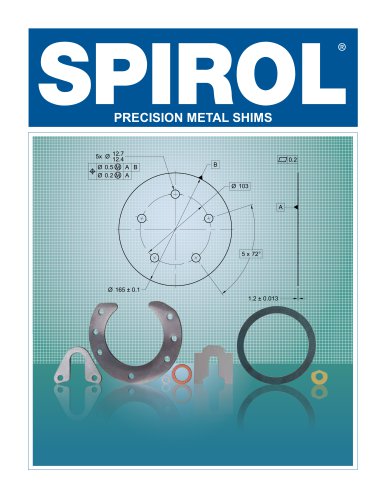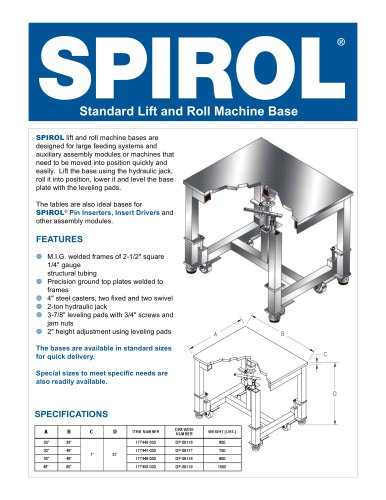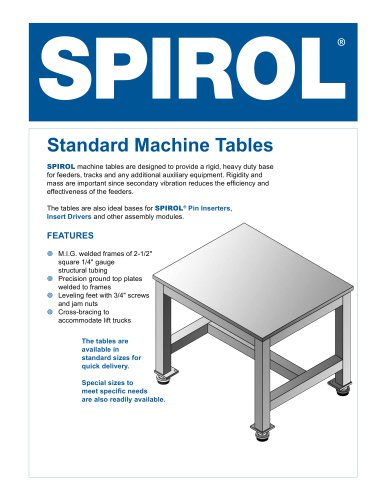Insert Material – Brass versus Stainless Steel0 pages
WHITE PAPER
Insert Material –
Brass versus Stainless Steel
by Michael Pasko, Application Engineer
SPIROL International Corporation, U.S.A.
SPIROL manufactures all standard Inserts from
brass, the accepted industry standard. In the majority
of situations brass will exceed the performance
requirements of the application while providing the
lowest installed cost solution. This is mainly due to
the thermal conductivity as well as the machinability of
brass compared to other materials that are sometimes
used for threaded Inserts.
The thermal characteristic of
brass enables the Inserts
to heat up and cool
down quickly during the
installation process
into molded plastic
parts. For those
Inserts that are
installed with heat
or
ultrasonics,
the
fact
that
the brass Insert
heats up quickly
translates into faster
installation time since
the operator does
not have to wait long
for the Insert to reach
the proper temperature to
melt the plastic. From a quality
perspective, the fact that brass
cools quickly means that immediately
after the heat is removed from the Insert the plastic will start
to coagulate which will secure the Insert in position and
prevent it from “floating” within the hole. Compare this to a
steel Insert that takes significantly more time to heat up —
the time it takes to melt the plastic and the total installation
time is longer. Since it also takes more time for steel to
cool down, the Insert must remain stationary in the plastic
part until the plastic has solidified enough to prevent it from
moving around in the hole.
When it comes to machining, brass is much easier to cut
than most ferrous materials. Whereas brass and stainless
steel generally cost about the same per pound in the “raw
state”, it’s the significant increase in manufacturing time for
stainless steel that drives up manufacturers’ costs. The fact
that stainless steel is much harder than brass also means
that tooling must be replaced more often than when cutting
brass. This also increases costs and “cuts” into manufacturing
time on the machine. Another significant advantage of brass
is that the scrap that is generated during the machining
operation can be sold back to the raw material supplier for
about the same cost per pound as what it was purchased
for in the raw state. Therefore, a significant portion of the
material cost is recovered; whereas steel scrap is basically
worthless.
Though brass is an excellent choice for use in most
components, there are instances where stainless
steel may be required. It is important to understand
that all materials possess unique characteristics
that must be considered when selecting an
Insert. A material that is functional in one
environment may be problematic in another.
For example, brass and stainless steel
are both corrosion resistant, yet each
will react differently to various corrosive
agents. This document will summarize
the most common features and benefits
of brass and stainless steel as well as
outline some of their limitations.
Brass
Brass is an excellent material
for use in most industrial and
agricultural applications and typically
offers the lowest cost solution:
Primary Features, Benefits, and
Limitations of Brass
•t
Brass offers much better thermal conductivity than
carbon or austenitic stainless steel. In fact, brass
is 2X as conductive as carbon steel and 15X as
conductive as austenitic stainless steel. As a result,
it is the optimal material for heat and ultrasonic
installation of Inserts and other turned products.
•t
Excellent thermal conductivity also translates
into better positional accuracy of brass Inserts.
Considering that brass cools quickly means that it
can be “set” quickly and accurately in a component
without fear that it will move within the plastic hole.
On the contrary, a steel Insert must be braced within
the molten plastic after it is put into position or else

 عضویت
عضویت  ورود اعضا
ورود اعضا راهنمای خرید
راهنمای خرید










